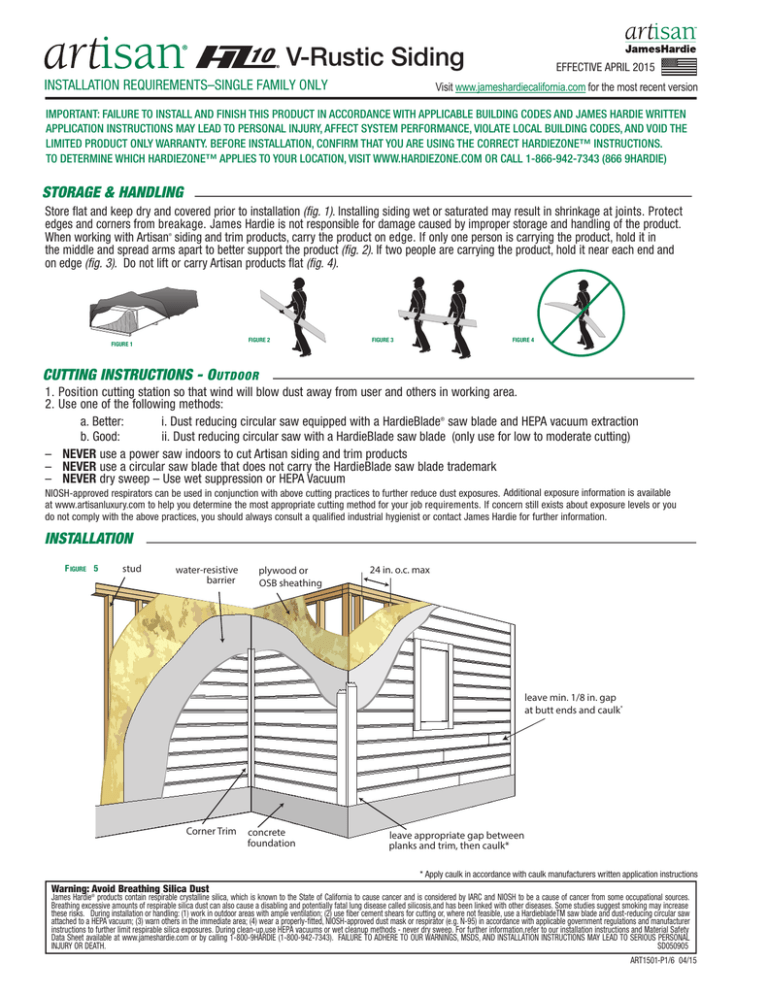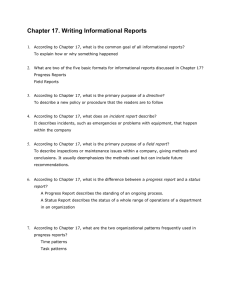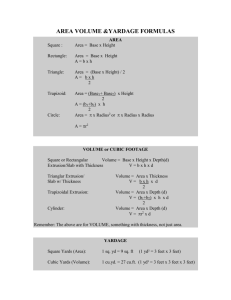
V-Rustic Siding
INSTALLATION REQUIREMENTS–SINGLE FAMILY ONLY
EFFECTIVE APRIL 2015
Visit www.jameshardiecalifornia.com for the most recent version
IMPORTANT: FAILURE TO INSTALL AND FINISH THIS PRODUCT IN ACCORDANCE WITH APPLICABLE BUILDING CODES AND JAMES HARDIE WRITTEN
APPLICATION INSTRUCTIONS MAY LEAD TO PERSONAL INJURY, AFFECT SYSTEM PERFORMANCE, VIOLATE LOCAL BUILDING CODES, AND VOID THE
LIMITED PRODUCT ONLY WARRANTY. BEFORE INSTALLATION, CONFIRM THAT YOU ARE USING THE CORRECT HARDIEZONE™ INSTRUCTIONS.
TO DETERMINE WHICH HARDIEZONE™ APPLIES TO YOUR LOCATION, VISIT WWW.HARDIEZONE.COM OR CALL 1-866-942-7343 (866 9HARDIE)
STORAGE & HANDLING
Store flat and keep dry and covered prior to installation (fig. 1). Installing siding wet or saturated may result in shrinkage at joints. Protect
edges and corners from breakage. James Hardie is not responsible for damage caused by improper storage and handling of the product.
When working with Artisan siding and trim products, carry the product on edge. If only one person is carrying the product, hold it in
the middle and spread arms apart to better support the product (fig. 2). If two people are carrying the product, hold it near each end and
on edge (fig. 3). Do not lift or carry Artisan products flat (fig. 4).
®
FIGURE 2
FIGURE 1
FIGURE 3
FIGURE 4
CUTTING INSTRUCTIONS - O UTDOOR
1. Position cutting station so that wind will blow dust away from user and others in working area.
2. Use one of the following methods:
a. Better:
i. Dust reducing circular saw equipped with a HardieBlade® saw blade and HEPA vacuum extraction
b. Good:
ii. Dust reducing circular saw with a HardieBlade saw blade (only use for low to moderate cutting)
– NEVER use a power saw indoors to cut Artisan siding and trim products
– NEVER use a circular saw blade that does not carry the HardieBlade saw blade trademark
– NEVER dry sweep – Use wet suppression or HEPA Vacuum
NIOSH-approved respirators can be used in conjunction with above cutting practices to further reduce dust exposures. Additional exposure information is available
at www.artisanluxury.com to help you determine the most appropriate cutting method for your job requirements. If concern still exists about exposure levels or you
do not comply with the above practices, you should always consult a qualified industrial hygienist or contact James Hardie for further information.
INSTALLATION
F IGURE 5
stud
water-resistive
barrier
plywood or
OSB sheathing
24 in. o.c. max
leave min. 1/8 in. gap
at butt ends and caulk*
Corner Trim
concrete
foundation
leave appropriate gap between
planks and trim, then caulk*
* Apply caulk in accordance with caulk manufacturers written application instructions
Warning: ®Avoid Breathing Silica Dust
James Hardie products contain respirable crystalline silica, which is known to the State of California to cause cancer and is considered by IARC and NIOSH to be a cause of cancer from some occupational sources.
Breathing excessive amounts of respirable silica dust can also cause a disabling and potentially fatal lung disease called silicosis,and has been linked with other diseases. Some studies suggest smoking may increase
these risks. During installation or handling: (1) work in outdoor areas with ample ventilation; (2) use fiber cement shears for cutting or, where not feasible, use a HardiebladeTM saw blade and dust-reducing circular saw
attached to a HEPA vacuum; (3) warn others in the immediate area; (4) wear a properly-fitted, NIOSH-approved dust mask or respirator (e.g. N-95) in accordance with applicable government regulations and manufacturer
instructions to further limit respirable silica exposures. During clean-up,use HEPA vacuums or wet cleanup methods - never dry sweep. For further information,refer to our installation instructions and Material Safety
Data Sheet available at www.jameshardie.com or by calling 1-800-9HARDIE (1-800-942-7343). FAILURE TO ADHERE TO OUR WARNINGS, MSDS, AND INSTALLATION INSTRUCTIONS MAY LEAD TO SERIOUS PERSONAL
INJURY OR DEATH.
SD050905
ART1501-P1/6 04/15
GENERAL REQUIREMENTS
• These instructions to be used for single family installations only**For Commercial / Multi-Family installation requirements go to
www.JamesHardieCommercial.com
• Artisan V Rustic siding can be installed over braced wood or steel studs spaced a maximum of 24 in. o.c. or directly to minimum 7/16 in. thick
OSB sheathing. See General Fastening Requirements. Irregularities in framing and sheathing can mirror through the finished application.
• Information on installing James Hardie products over foam can be located in JH Tech Bulletin 19 at www.jameshardie.com
• A water-resistive barrier is required in accordance with local building code requirements. The water-resistive barrier must be appropriately installed with
penetration and junction flashing in accordance with local building code requirements. James Hardie will assume no responsibility for water infiltration.
James Hardie does manufacture HardieWrap® Weather Barrier, a non-woven non-perforated housewrap¹, which complies with building code requirements.
• When installing James Hardie products all clearance details in figs. 6-17 must be followed.
• Adjacent finished grade must slope away from the building in accordance with local building codes - typically a minimum of 6 in. in the first 10 ft.
• Do not use Artisan V Rustic siding in Fascia or Trim applications.
• Do not install James Hardie products, such that they may remain in contact with standing water.
• Artisan V Rustic siding may be installed on flat vertical wall applications only.
• DO NOT use stain, oil/alkyd base paint, or powder coating on James Hardie® Products.
• For larger projects, including commercial and multi-family projects, where the span of the wall is significant in length, the designer and/or architect should
take into consideration the coefficient of thermal expansion and moisture movement of the product in their design. These values can be found in the Technical
Bulletin #8 “Expansion Characteristics of James Hardie® Siding Products” at www.JamesHardie.com.
CLEARANCE AND FLASHING REQUIREMENTS
Figure 6
Figure 7
Roof to Wall
Figure 8
Horizontal Flashing
Min. ¼ in.
Do not caulk
Min. 1”
Deck to Wall
Slabs, Path, Steps to Siding
As required by
IRC code
min 4 in. x 4 in.
Z-Flashing
Figure 10
Figure 9
Kickout Flashing
Figure 11
Min. 1”
Figure 12
Figure 13
Gutter to Siding Sheltered Areas
Ground to Siding
Min. 1”
Z-Flashing
Min. ¼ in.
6in.
1in.
Min. ½ in.
Figure 15
Drip Edge
Mortar/Masonry
L-Flashing
Z-Flashing
Z-Flashing
Figure 14
Figure 16
Block Penetration
Z-Flashing
Min. ¼ in.
Do not caulk
Min. ¼ in.
Figure 17
Valley/Shingle Extension
Extend shingles
at least 1 in. out
from the fascia
when gutters
are present
ART1501-P2/6 04/15
JOINT PLACEMENT & TREATMENT
JOINT PLACEMENT
Artisan lap butt joints are not required to land on stud,it
is recommended that butt joints be placed 4 in. off stud
(fig.18). Do not nail within 2 in.of the end of planks.
JOINT TREATMENT
Artisan V Rustic siding butt joints can be treated with either caulk
(fig. 19) or by removing minimum 3 in. of locking lip from both
ends of siding then place a joint flashing.
joint flashing**
Caulked Butt Joint*
24 in. o.c. max
Recommended
4 in. off stud
self
stacking
Blind Nail
Artisan
lap
waterresistive
barrier
FIGURE 18
®
FIGURE 19
INSTALLATION/FASTENER REQUIREMENTS
A. Follow all clearance requirements.
B. A starter strip is not needed for V Rustic siding.
C. Level and install starter course.
Tip: Use a small scrap piece of V-rustic to use as a block to seat the siding into the course below.
D. V Rustic can now be installed by stacking the siding onto the course below.
This can be completed by one person without the need of a lap gauge.
E. Measure occasionally to ensure siding is level and has proper reveal.
F. In areas such as gables, under windows, or other areas where stacking may be difficult use one of the following methods
1. Cut the material in sections, install first section into place. Take remaining section and slide into place, then fasten both sections.
2. Using a utility knife, cut the bottom lip from the siding and install in the traditional method.
24 in. o.c. max
Place
fastener 1
in. down
from top
of plank
Place
fastener
1 in. down
from top
of plank
Blind Nail
water-resistive barrier
stack plank
such that it
sets into the
plank below.
waterresistive
barrier
FIGURE 20
FIGURE 21
For proper fastener selection and wind load table, refer to the Artisan V Rustic Technical Data Sheet at www.Artisanluxury.com
*Caulk joint as required by local building code and leave gap per caulk manufacturers recommendations
ART1501-P3/6 04/15
V RUSTIC AS SOFFIT
INSTALLATION/FASTENER REQUIREMENTS
A. V Rustic may be installed in soffit applications over wood or steel
framing spaced a maximum of 24 inches on center.
B. Refer to the Artisan V Rustic Technical Data Sheet for wind load
and fastening information.
24 in. Max
C. Additional framing may be needed to ensure proper fastening.
D. V Rustic can be installed in the long direction (fig. 22) or the short
direction not greater than 24 in. on center (fig. 23)
E. Plan and cut out for any venting requirements prior to V Rustic
installation.
Artisan V Rustic siding butt joints are recommended to land off stud
(fig. 22). Install butt joints in moderate contact in soffit applications
(caulking, H covers, and battens are also acceptable).
FIGURE 22
FASTENER REQUIREMENTS
• BLIND NAILING: Place fastener no closer than 1 in. from siding ends
and minimum 1 in. down from top of siding.
• FACE NAILING: Place fastener no closer than 1 in. from siding ends and
2 in. from bottom of siding.
24 in. Max
FIGURE 23
ART1501-P4/6 04/15
GENERAL FASTENING REQUIREMENTS
Fasteners must be corrosion resistant, galvanized, or stainless steel.
Electro-galvanized are acceptable but may exhibit premature corrosion.
James Hardie recommends the use of quality, hot-dipped galvanized nails.
James Hardie is not responsible for the corrosion resistance of fasteners.
Stainless steel fasteners are recommended when installing James Hardie
products near the ocean, large bodies of water, or in very humid climates.
Manufacturers of ACQ and CA preservative-treated wood recommend spacer
materials or other physical barriers to prevent direct contact of ACQ or CA
preservative-treated wood and aluminum products. Fasteners used to attach
HardieTrim Tabs to preservative-treated wood shall be of hot dipped zinc-coated
galvanized steel or stainless steel and in accordance to 2009 IRC R317.3 or
2009 IBC 2304.9.5.
• Consult applicable product evaluation or listing for correct fasteners type and
placement to achieve specified design wind loads.
• NOTE: Published wind loads may not be applicable to all areas where Local
Building Codes have specific jurisdiction. Consult James Hardie Technical
Services if you are unsure of applicable compliance documentation.
• Drive fasteners perpendicular to siding and framing.
• Fastener heads should fit snug against siding (no air space). (fig. A )
• Do not over-drive nail heads or drive nails at an angle.
• If nail is countersunk, fill nail hole and add a nail. (fig. B)
• For wood framing, under driven nails should be hit flush to the plank with a
hammer (For steel framing, remove and replace nail).
• NOTE: Whenever a structural member is present, Artisan V-Groove lap siding
should be fastened with even spacing to the structural member. The tables
allowing direct to OSB or plywood should only be used when traditional framing
is not available.
• Do not use aluminum fasteners, staples, or clipped head nails.
PNEUMATIC FASTENING
James Hardie products can be hand nailed or fastened with a
pneumatic tool. Pneumatic fastening is highly recommended. Set air
pressure so that the fastener is driven snug with the surface of the
siding. A flush mount attachment on the pneumatic tool is
recommended. This will help control the depth the nail is driven. If
setting the nail depth proves difficult, choose a setting that under
drives the nail. (Drive under driven nails snug with a smooth faced
hammer - Does not apply for installation to steel framing).
snug
flush
Figure A
Countersink,
Fill & Add Nail
Figure B
DO NOT
DO NOT
under drive nails staple
CAULKING & PAINTING
For best results use an Elastomeric Joint Sealant complying with ASTM C920 Grade NS, Class 25 or higher or a Latex Joint Sealant complying with ASTM C834.
Caulking/Sealant must be applied in accordance with the caulking/sealant manufacturer’s written instructions. Note: OSI Quad as well as some other caulking
manufacturers do not allow tooling.
DO NOT use stain, oil/alkyd base paint, or powder coating on James Hardie® Products. James Hardie products must be painted within 180 days for primed product
and 90 days for unprimed. 100% acrylic topcoats are recommended. Do not paint when wet. For application rates refer to paint manufacturers specifications.
Back-rolling is recommended if the siding is sprayed.
CUT EDGE TREATMENT
Caulk, paint or prime all field cut edges. James Hardie touch-up kits are required to touch-up ColorPlus products.
CARE & MAINTENANCE
As a guide, it is recommended that normal maintenance tasks shall include but not be limited to:
• Washing down the exterior surfaces every 6 to 12 months with a garden hose or low pressure water spray to remove dirt and debris.*
• Re-applying of exterior finishes.*
• Maintaining the exterior envelope and connections including joints, penetrations, flashings, and sealants (caulking) that may provide
a means of moisture entry beyond the exterior cladding.
• Cleaning out gutters, blocked pipes, and overflows as required.
• Pruning back vegetation that is touching the building. Clearance between the siding and shrubs is recommended.
• Ensuring required external ground clearances and drainage slopes are maintained.
* Refer to your paint manufacturer for washing and recoating requirements related to paint performance.
ART1501-P5/6 04/15
WARNING
High pressure water blast and sand blasting may damage the surface of the fiber cement product. Low pressure water spray, a soft medium bristle
(nonmetal) brush is most suitable for cleaning fiber cement products. Acid washing can damage the fiber cement surface and is not recommended.
Note: If using a pressure washer, care must be taken to ensure that the water stream does not damage the surface of the siding. Damage to siding
arising from improper cleaning or maintenance may not be covered by the James Hardie warranty. Using wide fan tips that are kept a minimum of
6 feet from the wall and at pressures under 1500 psi will minimize the chance of damaging the siding.
COVERAGE CHART/ESTIMATING GUIDE
Number of 12' planks, Includes 5% waste factor.
Coverage Area
Less Openings
1 SQ = (100sq. ft.)
1
2
3
4
5
6
7
8
9
10
11
12
13
14
15
16
17
18
19
20
Artisan® V Rustic
Plank Width Exposure
7
15
30
45
60
75
90
105
120
135
150
165
180
195
210
225
240
255
270
285
300
Wind-Borne Debris Region: “Supplemental fasteners may be necessary when installing tabs in a Wind-Borne Debris Region, please call
Technical Services 800-942-7343 with any questions.”
© 2015 James Hardie Building Products, Inc. All rights reserved TM, SM and ® denote trademarks or registered trademarks
of James Hardie Technology Limited. The HZ10 logo is a registered trademark of James Hardie Technology Limited.
Additional Installation Information, Warranties, and
Warnings are available at www.artisanluxury.com
ART1501-P6/6 04/15






